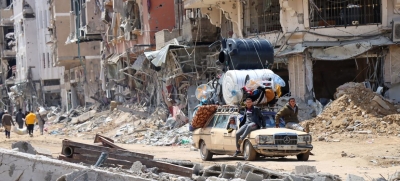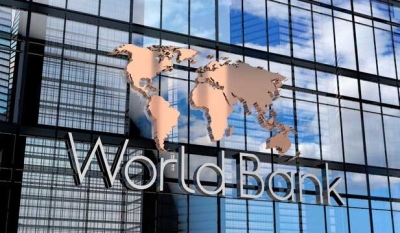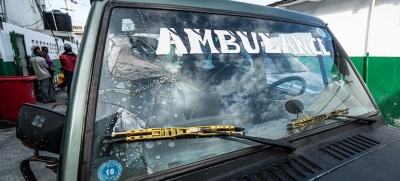CHANCAY, Peru, Dec 19 (IPS) — "We have always lived a very quiet life here, but everything has changed since the construction of the multi-purpose port began a few years ago," said Miriam Arce, a neighborhood leader in this municipality 80 kilometers north of the Peruvian capital, where the new port is projected to become the epicenter of trade between China and South American countries.
Chancay is one of the 12 municipalities of the province of Huaral and has a population of about 63,000 inhabitants. It is known for its agricultural valleys, a sea providing an abundant catch for artisanal fishers and for fishmeal production, and attractive waves for surfers.
"This bay is ideal for getting away from the chaos of Lima. People came here because they found the calm and certainty of being in a safe place where everyone knows each other, without fear of being robbed while enjoying a beautiful beach and delicious seafood dishes," Arce, president of the Association in Defense of Housing and the Environment of the port of Chancay, told IPS.
Her great-grandmother came to Peru in the 1930s fleeing the civil war in Spain, and settled in this Pacific coastal town where her children have always been involved in fishing.
"My grandfather worked in the first fishmeal factory and in the boom of the 1960s the company built these houses as a camp facing the sea and my dad, who was a fisherman, bought the house later," she said.
Arce’s memories are related to the dilemma posed by some people moving away and leaving behind the conflict generated by the construction of the Chancay Multipurpose Port Terminal that will cover a total of 992 hectares, built with an investment of 1.2 billion dollars in Chinese capital in the current first stage, to reach 3.6 billion by the time it is completed.
The investment is part of the Belt and Road Initiative launched globally by Beijing in 2013 as part of its global economic policy, which includes the development of road, port and connectivity infrastructure in different countries around the world, including South American nations.
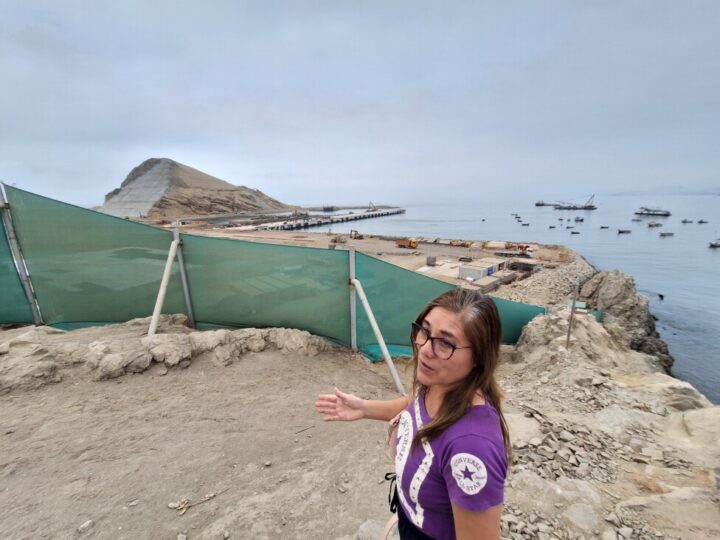
China’s largest shipping company, the state-owned Cosco Shipping, joined the project in 2019, when it acquired 60 percent of the shares. It changed the original design of the work started in 2016, to reconvert it into a multipurpose terminal, with four planned ports, and it took charge of construction. The remaining 40 percent stayed in the hands of the initial designer, the private Peruvian mining company Volcan.
It is called a multipurpose port due to the different functions of its terminals, which are expected to handle one million containers per year of general, non-mineral bulk, liquid and rolling cargo, using infrastructure with three different components: port operations, access and logistics, and the vehicular tunnel, as explained by the Chinese shipping company on the project’s website.
The first stage, covering 141 hectares, will culminate with the construction of a port that will be inaugurated during the next Asia-Pacific Economic Cooperation (APEC) summit, which will be held for the third time in Peru in November 2024 and will be attended by Chinese President Xi Jinping.
According to the Peruvian government, the megaproject will position this Andean country as the leading Pacific logistics center in Latin America, which will boost its economy and exports and increase trade opportunities as well as local employment.
Why uproot ourselves?
Arce is 54 years old and lives with her parents in the house where her grandparents, uncles, aunts and cousins lived. From the front of the house she can see the sea and their dock, while the back of the house is directly adjacent to the Cosco Shipping construction site, which has forced her to live permanently with dust, pollution and noise.
"This is not just a house, it is part of my family history. Why should I have to leave, uproot myself, if I was born here and I love this place. I was not a social activist, but defending the bay of Chancay has made me aware of the meaning of life and the interests at stake in our country, where it seems that money is worth more than people’s rights," she said.
Her house is in the area of La Puntilla and together with her IPS toured the group of homes that line the boardwalk and lead to a hill from where you can see the breakwater, and the movement of machinery and workers.
What is most striking is the mutilation of one side of the Cascajo hill, on whose slopes are built the houses of La Puntilla, and which overlooks the port’s operational area where the docks, jetties and areas for maritime entry, container storage and maintenance workshops will be built.
Arce pointed out how the beach has eroded in the area. She also showed the geotubes, three-meter diameter canvas sleeves filled with sand and water that the company has placed between the sea and the sand as a retaining wall to counteract erosion.
"The works have changed the marine currents, we no longer have waves and have lost not only the characteristic beauty of the bay that was a tourist attraction, but the environment and natural resources have been damaged," she complained.
In 2016, explosions began that created seismic waves that affected houses located as far as 50 kilometers from the project area. Protests led to the signing of agreements between affected residents who received payments of between 75 and 260 dollars for the inconvenience caused.

Winging it
"That’s the problem, that they do not recognize us as people affected by the project, and the agreements practically set conditions for people not to complain or protest," Angely Yufra, from the Peralvillo area, also part of Chancay, where she has lived since she was born 49 years ago, told IPS.
She now lives alone with her husband because their children have become independent and she says that she is not intimidated by threats from the company, which has criminalized the protests by prosecuting several of their leaders.
On a tour through the streets of the port to the main access road to the North Pan-American highway, Arce and Yufra show how the company has practically taken over urban areas to move its trucks with materials to the entrance to the construction site, as well as to a part repaired after a collapse caused by the construction of the tunnel that will run through Chancay.
On its information page, Cosco Shipping states that the viaduct tunnel is 1.8 kilometers long and is a three-lane road for the exclusive transit of cargo related to port operations, along with two large conveyor belts.
"There has been no analysis of soils, which are highly varied in Chancay, to build the tunnel. From the beginning, the project got off on the wrong foot because due to the scope of the work it should have been carried out in an unpopulated desert area," Arce argued.
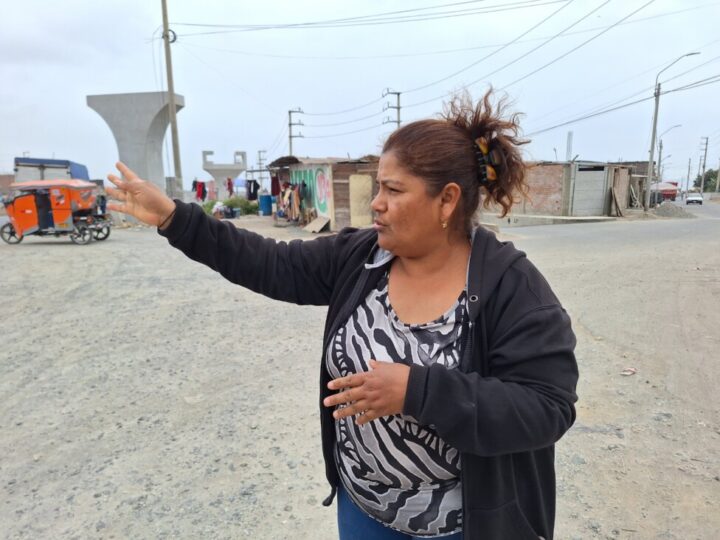
Along the Pan-American Highway, a road that separates the municipality of Chancay in two, she pointed to huge concrete pylons on which an elevated road is to be built for the traffic of at least 4,000 trucks a day to the port’s logistics zone.
"And what will happen to the people who live on the sides of the road? They will be trapped, unable to cross to go to school, to the market, to visit relatives. What they have said is that they are going to build an alternative road, but that could take years," said the community leader.
Arce said the origin of the project was marked by misinformation and under-the-table deals, and that it involved the second government of Alan García (2006-2011) and those that succeeded him: the administrations of Ollanta Humala, Pedro Pablo Kuczynski and Pedro Castillo. García committed suicide in 2019 when he was going to be arrested and the others are facing prosecution for different crimes.
"All of them gave their approval despite the fact that civil society and public organizations have submitted more than a hundred observations to the Modification of the Environmental Impact Study, which is necessary for the authorization of the works," said Arce.
These observations include impacts on the life and rights of the local population and on nature, as well as irregular procedures.
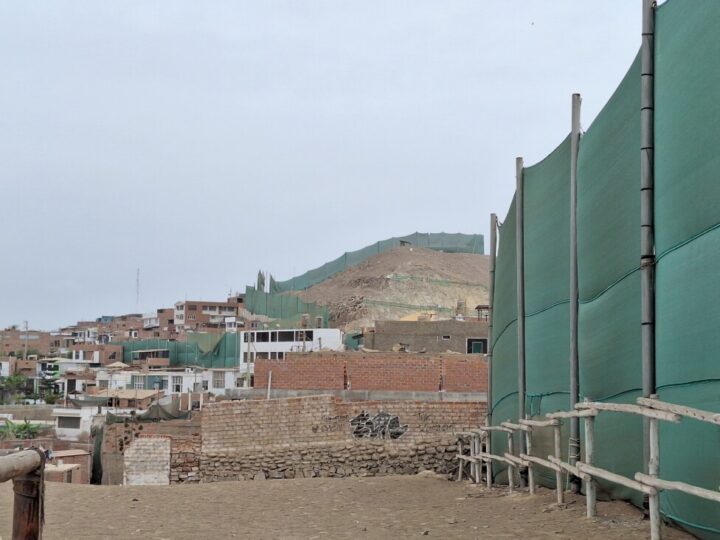
Among the effects are impacts on the mental health of local residents. This is the case of María Bautista, "a lifelong resident of the Chancay port" who, at the age of 75 years, said she had never experienced anything like this before.
She and her daughter and granddaughter run a restaurant where ceviche, one of Peru’s signature dishes, is a favorite, as well as a hostel on the top floor, where surfers used to come. "Now they don’t come anymore because there are no waves," she lamented.
She added that she has been badly affected psychologically and suffers from terrible anxiety.
"There is also contamination of the soil that affects our bronchial tubes and mistreatment by the company’s personnel, who trample on our dignity when giving us the agreed-upon amounts. They have told us that for Christmas we will receive a basket of goods ‘because they have been ripped off’, as if we were begging for money when we are working people," Bautista said.
During the IPS tour through the streets of the port of Chancay, the dialogue was with women neighbors and leaders, because the male leaders were away on other business.
The Association in Defense of Housing and the Environment of the port of Chancay and other local residents’ organizations know that there will be no going back on the works because "the economic interests and political lobbying are very strong," said Arce.
She explained that in view of this they are proposing the formation of a multisectoral round table at the government level to evaluate the Environmental Impact Study and to recognize local residents as being affected by the project, as this will be the only way to fight for a compensation policy that they currently have no legal basis for demanding.
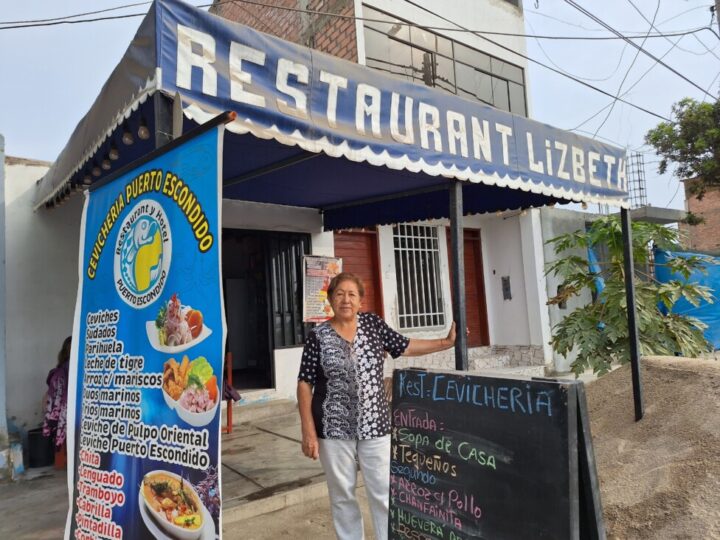
Arce said the local populace would join the protests because as the work progresses, the range of damage will increase, as is happening with the construction of the tunnel under the streets.
They are also beginning to feel the impacts of the overhead road that "will create a traffic jam at kilometer 80 of the North Pan-American highway, harming not only us but everyone who tries to drive along that road," she said.
"We are a pebble in the giant’s shoe," she summed up.
A boost to the economy?
Economist Norma Canales, who lived in the Huaral valley as a child, said there is a possibility that the multipurpose port of Chancay will increase GDP, as claimed by its advocates, which could contribute to improving the quality of life of the local population.
However, she said it was necessary to take into account the impacts that it will have on the lifestyle of local inhabitants, because it will lead to a radical change in their urban and productive infrastructure.
"It will mean going from a town of small-scale fishermen and farmers to a mega-port city receiving traffic of large-capacity shipping vessels," she told IPS.
Against this background, she said, it was important not to lose sight of the possible population growth due to the demand for employment that may arise, which will require a response that guarantees access to services such as water, electricity and housing.



